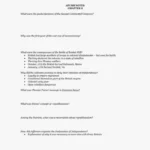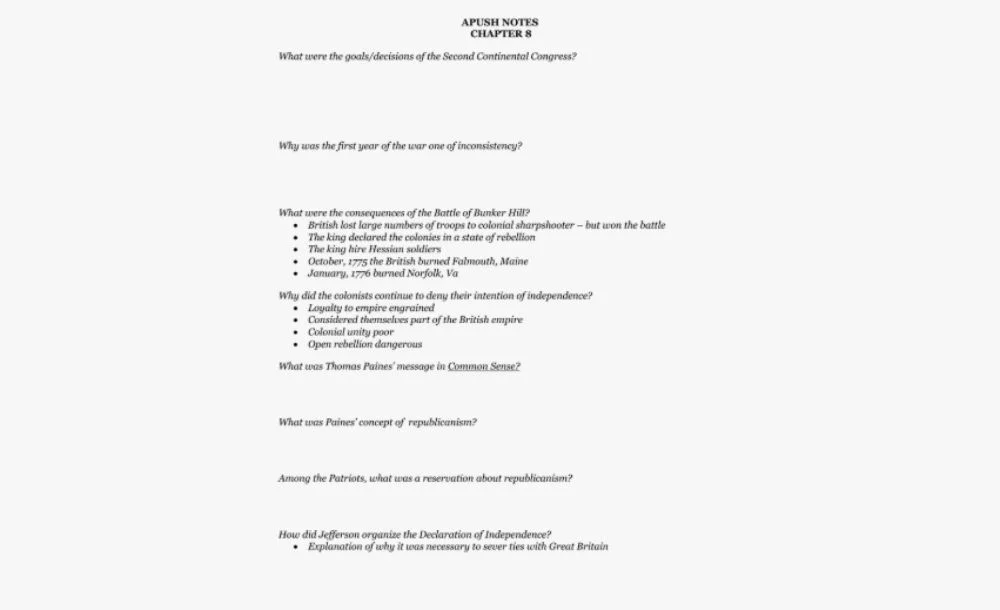When studying U.S. history, Chapter 8 APUSH notes hold a vital place in understanding how the early 19th century shaped the trajectory of the United States. This chapter explores a transformative era after the American Revolution, focusing heavily on political developments, the rise of nationalism, economic evolution, and America’s stance on foreign affairs. From the War of 1812 to the bold declarations of the Monroe Doctrine, Chapter 8 provides a snapshot of a nation that is no longer fighting for independence but fighting to define itself. These notes are not just historical facts; they are the building blocks of understanding how America went from a loose collection of states to a nation with ambition, identity, and power on the global stage.
The War of 1812
One of the major highlights in Chapter 8 APUSH notes is the War of 1812. This conflict, often referred to as America’s second war for independence, was fueled by several grievances British impressment of American sailors, interference with U.S. trade, and British support for Native American tribes resisting American expansion. The war itself was marked by several key moments, including the burning of Washington, D.C., and the Battle of New Orleans.
Ironically, the Treaty of Ghent, which ended the war, didn’t address the issues that started it. Yet, it fostered a sense of national pride and identity that united Americans like never before. For many students, Chapter 8 APUSH notes emphasize how this war shifted the way Americans saw themselves not as former colonies, but as a formidable nation ready to stand its ground.
The Era of Good Feelings A Misleading Harmony
Chapter 8 APUSH notes often romanticize the “Era of Good Feelings,” the period following the War of 1812 during James Monroe’s presidency. This term suggests political unity and national contentment, but beneath the surface, the seeds of sectionalism and future conflict were already taking root. While there were no major political party clashes thanks to the collapse of the Federalist Party the country was not as unified as the phrase suggests. Economic policies favored different regions in different ways, and debates over slavery began to polarize North and South. Still, the period saw unprecedented developments in infrastructure, education, and westward expansion, setting the stage for America’s transformation into a continental power.
Economic Nationalism and the American System
Another cornerstone in Chapter 8 APUSH notes is the emergence of economic nationalism, especially through Henry Clay’s American System. Clay believed in tying the nation together through a robust economy supported by a protective tariff, a national bank, and internal improvements like roads and canals. These policies aimed to make the United States economically independent and self-sufficient.
The Second Bank of the United States played a crucial role in stabilizing the economy and managing currency. The building of the Erie Canal and the National Road are examples of how the American System contributed to connecting regions, encouraging trade, and boosting domestic industries. Economic nationalism was no longer a theory it became a practice that helped foster a unified, yet diverse, economy.
A Bold Foreign Policy Stance
Chapter 8 APUSH notes wouldn’t be complete without a discussion of the Monroe Doctrine. In 1823, President James Monroe issued a message to Congress that would become a foundational piece of American foreign policy. He essentially told European powers to keep out of the Western Hemisphere. This wasn’t just a bold move; it was a declaration of the United States as the protector of newly independent Latin American nations. While America didn’t have the military strength to enforce this doctrine at the time, it reflected growing confidence and a desire to shape international affairs. This moment is crucial in Chapter 8 APUSH notes because it signals a shift from isolation to assertiveness a preview of the global role America would later play.
Judicial Nationalism Power of the Supreme Court
In reinforcing federal authority, the decisions of the Supreme Court during this era are frequently covered in Chapter 8 APUSH notes. Chief Justice John Marshall handed down rulings that expanded the power of the federal government and defined the limits of state power. In McCulloch v. Maryland, the Court ruled that states could not tax federal institutions, like the national bank.
This reinforced the idea that federal law trumps state law. In Gibbons v. Ogden, the Court ruled that only the federal government had the authority to regulate interstate commerce. These landmark cases are more than just legal footnotes; they are evidence of a nation aligning itself more closely under centralized authority, something that Chapter 8 APUSH notes emphasize as key to understanding the period’s nationalism.
Transforming the Economy
The market revolution was a sweeping change in how Americans produced, distributed, and consumed goods—and it’s a pivotal topic in Chapter 8 APUSH notes. New technologies like the steamboat, and improvements in roads and canals, allowed goods and people to move faster than ever before. This period saw the rise of factory systems, especially in the North, and the beginning of a wage labor economy.
Farmers in the Midwest could now sell their crops to distant markets, and southern cotton fed northern textile mills. The economy became increasingly interconnected, and a national market began to take shape. Chapter 8 APUSH notes show that this transformation not only boosted economic growth but also widened the gap between regions.
Cultural Nationalism and Education Reform
In Chapter 8 APUSH notes, cultural nationalism is a theme that connects the dots between politics, society, and identity. Writers like Washington Irving and James Fenimore Cooper helped shape an American literary voice, independent from European influences.
In schools, the idea of Republican Motherhood encouraged women to educate their children in the values of liberty and democracy, which in turn helped justify broader female access to education. Public schools began to spread, especially in northern states, emphasizing civic duty and patriotism. Chapter 8 APUSH notes illustrate how national pride wasn’t just political or economic it became part of the cultural fabric of the country.
Native American Resistance and the Battle of Tippecanoe
Chapter 8 APUSH notes don’t ignore the resistance faced by American expansionists, especially from Native tribes in the Northwest Territory. Leaders like Tecumseh and his brother, known as the Prophet, attempted to form a confederation of tribes to resist white encroachment. Their movement was ultimately defeated in the Battle of Tippecanoe, led by future president William Henry Harrison.
This battle not only weakened Native resistance but also heightened tensions with Britain, whom Americans believed were aiding Native fighters. These events are crucial in Chapter 8 APUSH notes because they highlight the ongoing conflict between expansion and resistance—a theme that continues well into later chapters.
Slavery and the Missouri Compromise
One of the early signs of sectionalism, as highlighted in Chapter 8 APUSH notes, was the Missouri Crisis. When Missouri applied for statehood as a slave state, it threatened to upset the balance between free and slave states. The Missouri Compromise of 1820 allowed Missouri to enter as a slave state and Maine as a free one while banning slavery north of the 36°30′ line. This compromise kept peace temporarily but exposed the deep rift between North and South. Chapter 8 APUSH notes stress that while nationalism was rising, the country was already showing signs of a divide that would later erupt into civil war.
Conclusion
To wrap it all up, Chapter 8 APUSH notes are much more than a collection of historical facts they offer insight into how America grew in confidence, unity, and ambition. From war and diplomacy to economic and cultural growth, this chapter paints a picture of a country on the rise, yet riddled with internal contradictions.
The themes of nationalism, reform, expansion, and division all come to the surface in ways that continue to shape the narrative of American history. Whether you’re prepping for a test or trying to get a deeper grasp of early 19th-century America, Chapter 8 APUSH notes are your essential guide.
FAQs
1.What is the importance of Chapter 8 APUSH notes?
Chapter 8 APUSH notes highlight key developments in American nationalism, economic growth, and foreign policy after the War of 1812.
2.How did the War of 1812 affect American identity?
It gave Americans a sense of unity and confidence, laying the foundation for a more assertive national identity.
3.What was the purpose of the Monroe Doctrine?
To warn European powers against further colonization in the Americas and assert U.S. influence in the Western Hemisphere.
4.Why was the Missouri Compromise significant?
It temporarily resolved conflicts over slavery but revealed deep sectional divisions in the U.S.
5.What role did Henry Clay’s American System play?
It aimed to unify the national economy through tariffs, a national bank, and infrastructure improvements.

























